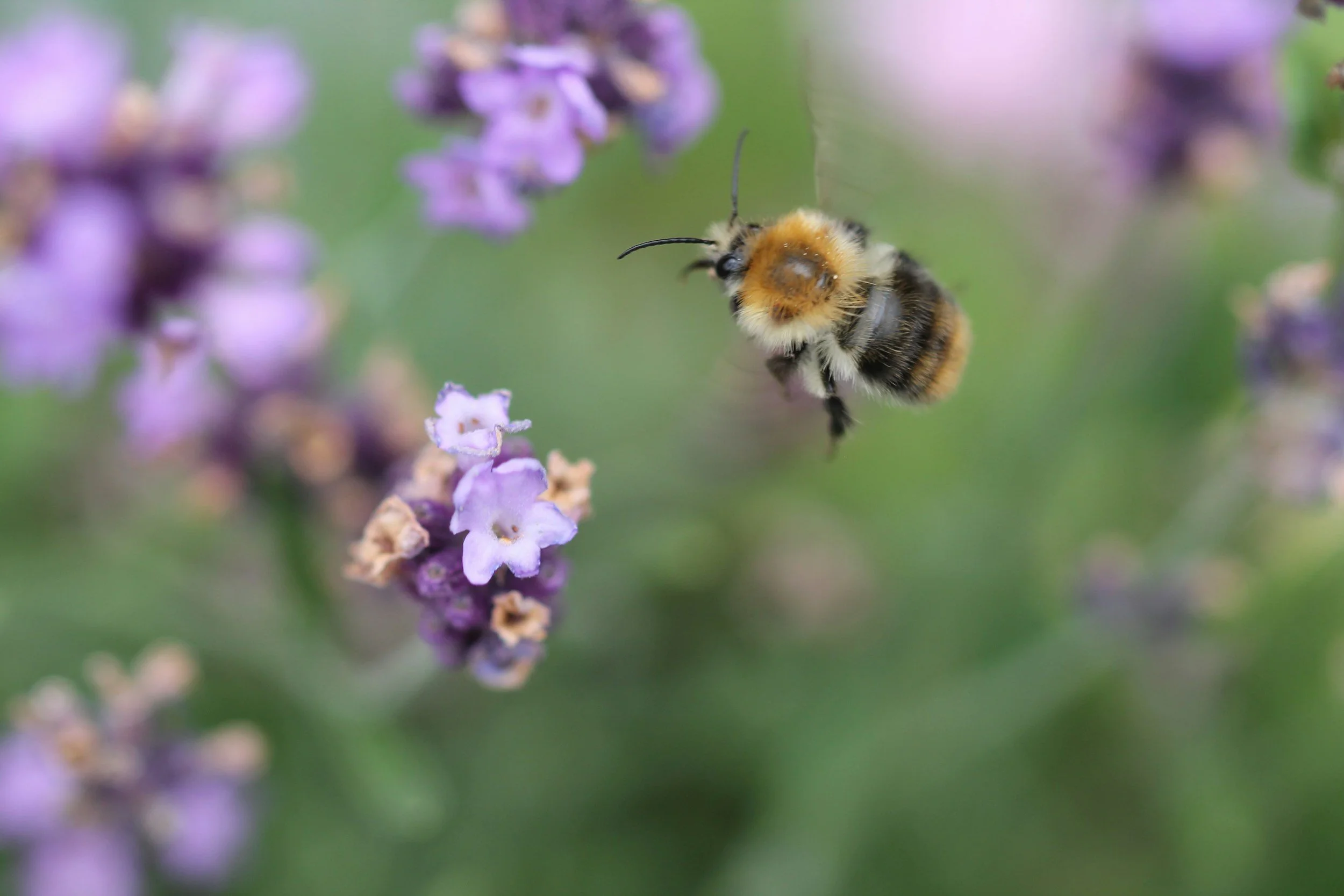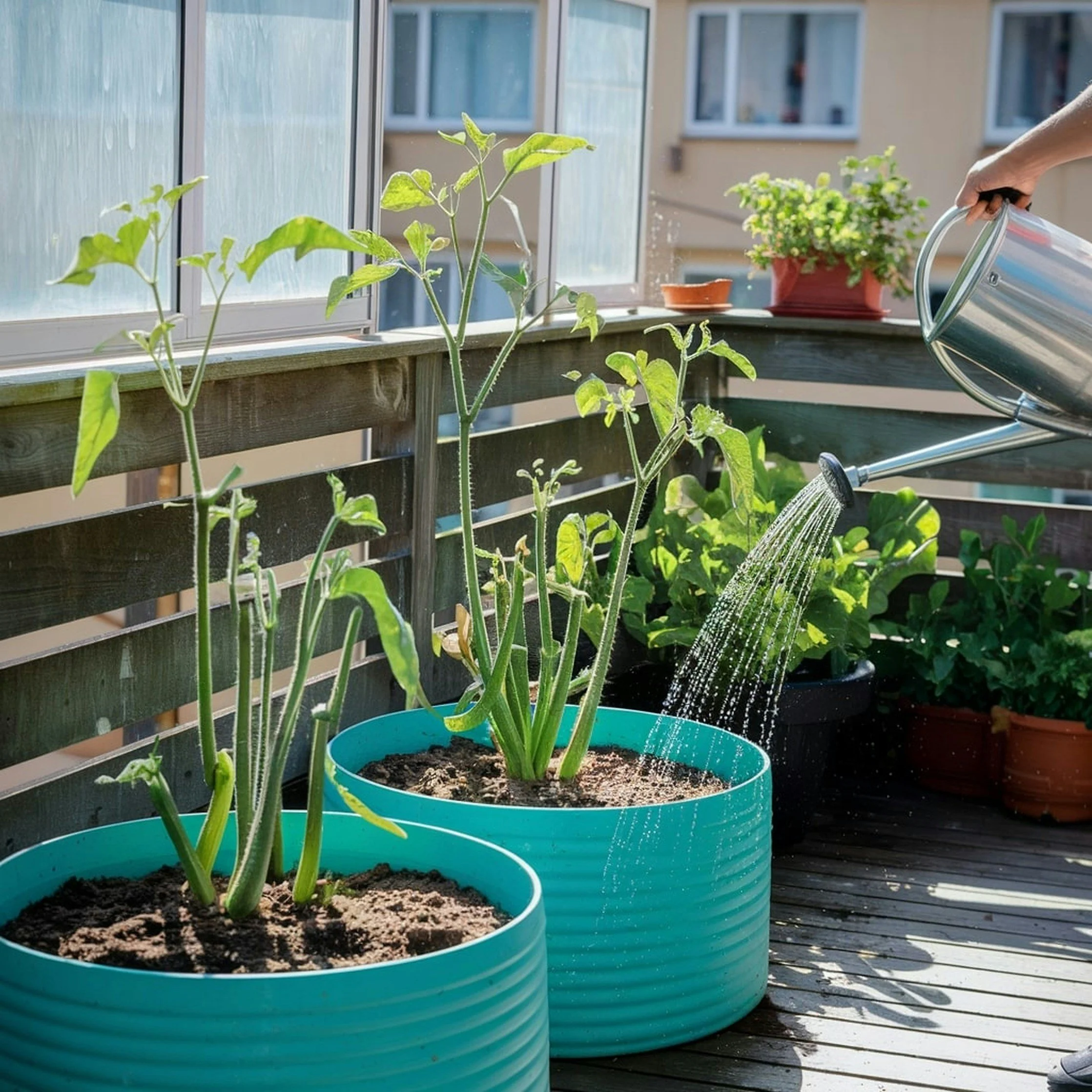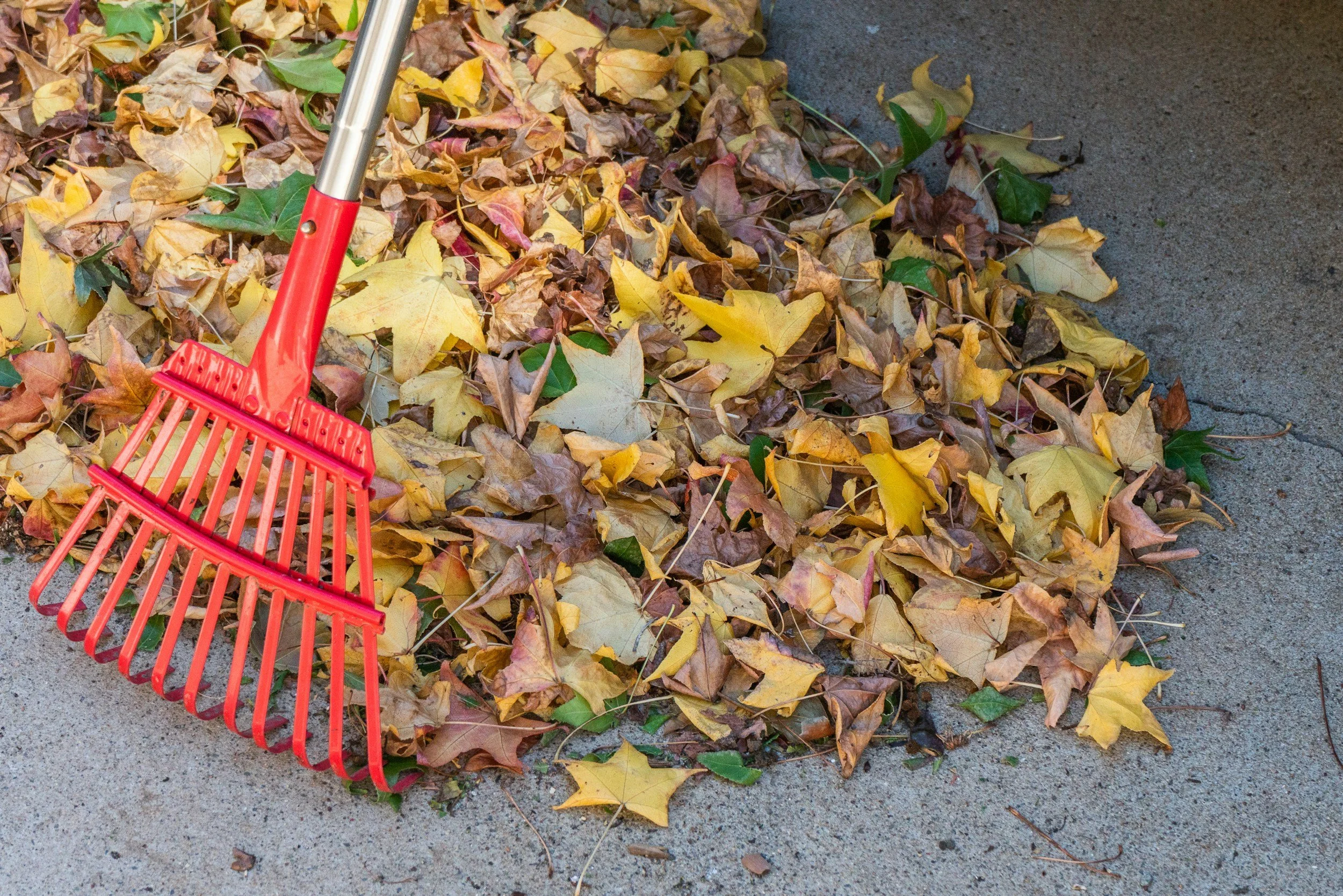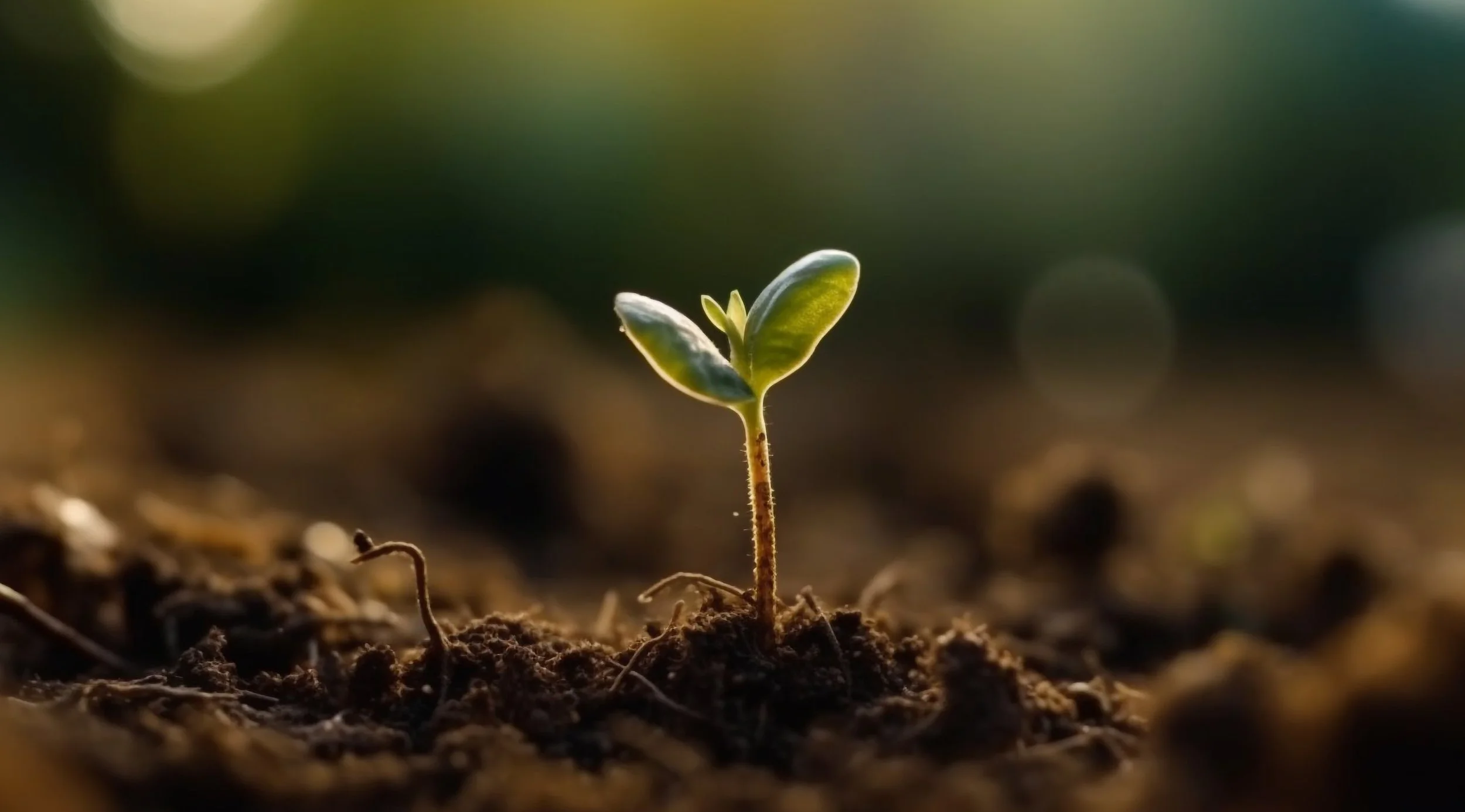Winter Prep for Pollinator Gardens: How to Protect Bees, Butterflies, and Beneficial Insects All Year Long
/As the growing season winds down, it’s tempting to tidy up the garden by cutting back plants, raking every leaf, and prepping for a neat winter landscape. But if you want to support pollinators like bees, butterflies, and even beneficial beetles, the best thing you can do might be…a little less tidying.
Pollinators depend on our gardens not just for nectar and pollen during the growing season, but for shelter and sustenance when the weather turns cold. A garden that looks a little “wild” through fall and winter can be a lifesaver for these species and a huge boost to your spring blooms and harvests.
In this guide, we’ll explore why pollinators need year-round care, how to prepare your garden for winter without evicting your beneficial insects, and which plants, materials, and design choices will keep your pollinator habitat thriving through the cold months.
Why Pollinators Matter More Than Ever
Pollinators — bees, butterflies, beetles, hummingbirds, and certain flies and moths — play a vital role in maintaining ecosystems and our food supply. Roughly 75% of the world’s flowering plants rely on animal pollinators, according to the USDA. In the U.S. alone, native bees and honeybees are responsible for pollinating crops worth more than $15 billion annually.
Bees, in particular, are powerhouses. As they move from flower to flower collecting nectar, they transfer pollen grains that fertilize plants which helps produce fruits, seeds, and vegetables. But bees aren’t alone in this work. Butterflies and moths help pollinate wildflowers and garden ornamentals, while beetles and hoverflies pollinate fruit trees and vegetable crops.
Populations of these creatures have been plummeting worldwide. The Intergovernmental Science-Policy Platform on Biodiversity and Ecosystem Services (IPBES) estimates that up to 40% of pollinator species are at risk of extinction due to habitat loss, pesticides, and climate change. Without pollinators, there would be a lot less fruits, vegetables, and nuts, which would mean a surge in nutritional deficiencies among human populations and an increase in diseases as well as deaths from malnutrition. In fact, we’re already beginning to see these things happen around the world.
That’s where backyard gardeners come in. By maintaining pollinator-friendly gardens year-round, we can offer critical refuge and food sources that help offset these losses.
Preparing Your Pollinator Garden for Winter
Winter preparation doesn’t mean stripping the garden bare. In fact, it means rethinking “tidy.” Pollinators overwinter in many forms—some as eggs, some as larvae or pupae, and others as adults tucked inside hollow stems or beneath leaf litter. Your fall cleanup strategy should balance garden health with habitat preservation.
1. Leave the Leaves
Fallen leaves are natural insulation, keeping soil temperatures stable and protecting overwintering insects. Many butterfly and moth species, including luna moths and great spangled fritillaries, overwinter in leaf litter.
Instead of raking everything away, leave a thin layer under trees, shrubs, and garden edges. You can also mulch lightly with shredded leaves around perennial beds, creating cozy shelters for beneficial insects while improving soil health. Wait until mid-to-late spring to remove compost or leaf litter; this will give hibernating pollinators time to emerge safely in the warmer temperatures.
2. Keep Some Stems Standing
Those dried stalks and seed heads might look messy to us, but they’re prime real estate for native bees and other beneficial insects. Species like mason bees and leafcutter bees lay their eggs inside the hollow stems of plants such as bee balm, coneflower, black-eyed Susan, and raspberry canes.
Cut back only what’s diseased or collapsing. Leave the rest standing 12–24 inches tall. These stems provide nesting chambers that will host next season’s bee population.
3. Mulch Naturally and Mindfully
Mulch protects plant roots from freeze-thaw cycles and helps retain moisture. However, not all mulches are created equal.
Eco-friendly options include
Shredded leaves – free, abundant, and excellent for soil life
Compost – adds nutrients while insulating beds
Pine needles (pine straw) – slow to decompose and gentle on soil
Shredded or nugget pine bark – durable and sustainable
While there is debate about whether or not dyed mulches, which often contain chemical colorants, are harmful to the soil. The University of Maine and the University of Massachusetts Cooperative Extensions say that dyed mulches do not harm plants or the soil. Recycled wood mulches that contain pressure-treated wood, however, should be avoided, since this wood is usually treated with chromated copper arsenate, which IS harmful to the soil and your plants. Likewise, skip plastic mulches, which contribute to microplastic pollution and disrupt beneficial soil organisms.
Cedar mulch deserves a cautionary note: while it repels some pests, it can also deter pollinators and beneficial insects. If you use it, limit it to pathways or ornamental areas.
4. Plant for Winter and Early Spring Blooms
While many flowers fade with the frost, several species provide nectar and pollen through fall and even into winter. These late-bloomers are crucial for sustaining bees and butterflies before and after hibernation.
Cool-weather bloomers include:
Calendula (Calendula officinalis) – hardy and cheerful, blooming into winter in mild climates
Heather (Erica and Calluna spp.) – offers nectar on mild winter days
Rosemary (Rosmarinus officinalis) – evergreen and a midwinter nectar source in warm zones
Winter aconite (Eranthis hyemalis) – one of the first flowers to appear in late winter
Crocus and snowdrops – early bloomers that provide essential spring nectar
If your winters are harsh, focus on planting native perennials that offer late-season resources before going dormant—such as goldenrod, asters, and sedum. Native plants are especially valuable because they coevolved with local pollinators, providing ideal nutrition and habitat.
5. Offer Shelter Beyond the Garden Bed
Not all pollinators overwinter in plants. Some, like bumblebee queens, burrow into loose soil or leaf litter, while butterflies such as mourning cloaks find shelter in brush piles or beneath bark.
You can help by:
Creating small brush or log piles in quiet corners of your yard
Leaving a patch of bare, undisturbed soil for ground-nesting bees
Installing bee hotels (but cleaning or replacing them annually to prevent disease buildup)
Even rock piles can offer protective microclimates for overwintering insects and small wildlife.
Supporting Pollinators Year-Round
A truly pollinator-friendly garden works in every season. Here’s how to extend your care beyond winter:
Spring
Resist the urge to prune or rake too early. Allow overwintering insects to emerge naturally. Plant early bloomers like crocus, lungwort, and native violets.
Summer
Provide water. A shallow dish filled with pebbles and water gives pollinators a safe place to drink. Skip pesticides, and use organic pesticides sparingly (and preferably later in the evening), since even some organic pesticides can harm bees and other pollinator species.
Fall
Focus on planting late bloomers such as asters, goldenrods, and sunflowers to help pollinators build reserves before winter. Collect and share seeds from native plants to encourage more pollinator-friendly gardens in your community.
Rethinking “Perfection” in the Garden
Supporting pollinators often means embracing imperfection. A few chewed leaves or untrimmed stems are signs of life, not neglect. Every hollow stalk, leaf pile, and seed head plays a role in sustaining biodiversity.
When you let nature take its course, even just in one corner of your yard, you’re helping create a living ecosystem that rewards you in return. Healthier soil, fewer pests, and vibrant blooms are all signs that your garden is working as it should.
Gardening for a Future That Blooms
Bees, butterflies, and other pollinators don’t just make our gardens beautiful; they make them possible. As their natural habitats shrink, home gardens have become sanctuaries of survival.
By rethinking how we “clean up” for winter and planting with the full year in mind, every gardener can become part of a global effort to restore pollinator populations.
The payoff is enormous: a garden that hums with life, bursts with blooms, and continues to nurture the web of creatures that sustain our food, our health, and our planet.
You may also be interested in…











































As the growing season winds down, it’s tempting to tidy up the garden by cutting back plants, raking every leaf, and prepping for a neat winter landscape. But if you want to support pollinators like bees, butterflies, and even beneficial beetles, the best thing you can do might be…a little less tidying.